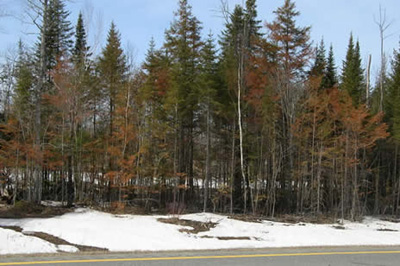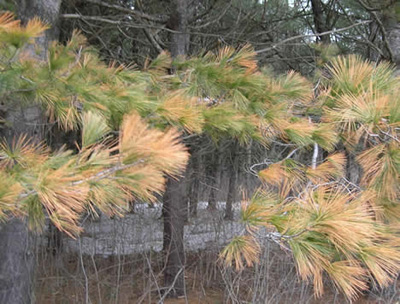DACF Home → Bureaus & Programs → Maine Forest Service →Forest Health & Monitoring → Forest Pest Index → Winter Drying
Winter Drying

Winter desiccation, or drying, occurs when the foliage is exposed to cold temperatures and high winds, while the ground remains frozen. The inability to replace the moisture lost from the foliage results in winter-burn. These symptoms and the damage caused are made even more severe if roadside deicing chemicals have been splashed or carried from wind-driven mists. The damage is commonly seen affecting trees along the major roadways, and especially those growing on low or wet sites, where roots are shallow, and the ground was deeply frozen. While damage from winter desiccation can adversely affect tree growth and vigor, most trees will recover quickly when new foliage begins to develop this spring. If the damage was severe enough to kill buds, recovery will be significantly slower. A check of bud vitality (branch tips and buds should show as bright green under the bark or bud scales) can give a rapid indication of the severity of damage.

MAINE DEPARTMENT OF AGRICULTURE, CONSERVATION AND FORESTRY
Maine Forest Service - Forest Health and Monitoring Division